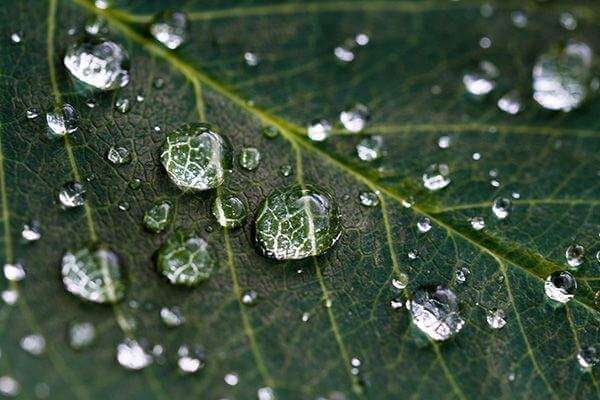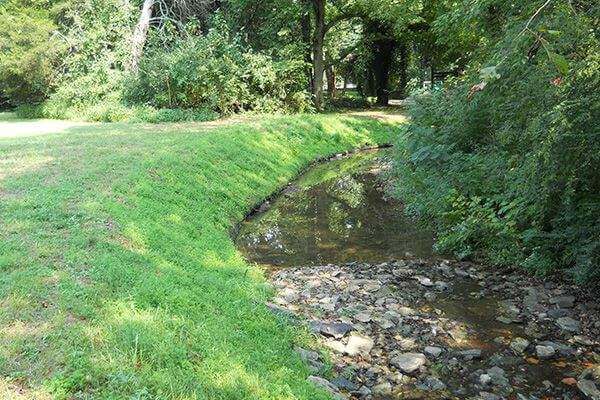Blog Archives

As the year comes to an end, we’d like to take a look back at an eventful 2018 with our favorite moments from each month:
January: We kicked off the year and tradeshow season at COMPOST2018, the annual conference for the US Composting Council.
February: Dr. Britt Faucette & John Paoluccio spoke at the IECA Annual Conference on the topic of Compost-Based Biofiltration Practices in Urban Runoff and MS4 Stormwater Permit Compliance Applications.Dr. Craig Kolodge also spoke, on the topic of Three Keys to Successful Living Shorelines - Containment, Reinforcement and Organic Media.
March: With the help of EcoPractices, we calculated our 2017 Environmental Impact and announced the statistics on how our Sustainable Management Practices positively impacted the environment.
April: The Spring issue of WEF Worldwater Stormwater Management magazine featured an article by John Paoluccio titled Catch Basin Inserts: Last line of defense in stormwater treatment (page 31), explaining the operation, benefits, and applications of these devices.
May: Filtrexx sponsored the annual Composting Council Research & Education Foundation (CCREF) Young Investigator Scholarship for young professionals in the field of compost research.
June: A unique GreenLoxx wall was installed in Lakewood, OH. The grown out after photo from a few months later shows how well this natural, vegetated feature works with traditional hardscapes.

July: The Filtrexx Blog officially launched – we’ve enjoyed sharing industry news and knowledge from our partners and experts each week!
August: Dr. Britt Faucette spoke at StormCon, The Surface Water Quality Conference on the topic of Ecosystem Service Benefits of Compost-Based Sustainable Management Practices.
September: Filtrexx joined the 7th annual Storm Water Awareness Week by participating in five workshops across the state of California.
October: We took a look at what it really means for sediment control products to meet state and federal requirements on the blog.
November: Filtrexx welcomed our new General Manager, Chris Freitag, and wished a great retirement to Rob Carrothers.
December: Dr. Craig Kolodge spoke at the National Summit on Coastal and Estuarine Restoration and Management on the topic of Using Organics for Coastal Resiliency: Upland to Coastline.
That’s a wrap on 2018 – from all of us at Filtrexx we look forward to working with existing and new customers and partners in 2019, and wish you all a Happy New Year!
As the Associate Marketing Manager for Filtrexx, Kristin specializes in print & digital marketing, graphic design, and website management. She also serves as the moderator for the monthly Filtrexx Webinar Series. Kristin attended the University of Toledo where she obtained a Bachelor of Arts in both communication and environmental studies. After completing multiple internships with Filtrexx, she officially joined the Filtrexx team in 2010. In her free time, she enjoys exploring local parks with her husband, spoiling their two golden retrievers, and cheering on the Cleveland Indians.

What would nature do? This is the driving force in how we approach problem solving, product innovation, and site design solutions. If you look close enough nature often provides a perfect blueprint for efficiency, performance, and sustainability, and you can find this guiding principle in each of our major product lines from SiltSoxx and EnviroSoxx - relying on natural materials and principles of water biofiltration, to our Living Shoreline and Bank Stabilization technologies - relying on natural materials and native plants to restore natural water cycles and protect biological diversity – all while restoring natural carbon cycles as a fundamental design feature. It is no coincidence that organic matter is the foundational material for all Filtrexx products, just as it is for all soil ecosystems worldwide. This essential material maintains local and global water and carbon cycles, filters pollutants, minimizes stormwater and soil erosion, and is the foundation material for plants and the soil food web.
Preservation of organic matter (often referred to as natural capital) at the landscape and watershed scale is where each of us can have the greatest impact. However, preservation is not always feasible due to economic, land area, and land development constraints. Designing or reestablishing organic matter, back into the landscape, can be just as important. Selecting native plant materials and native sources of organic matter will help to ensure maximum performance and health of above and below ground ecosystems; and when designed appropriately will help restore and sustain ecosystem services. This type of design also builds stability and resilience within the system to protect against future, unforeseen disturbances and disasters, both human and environmental.
The basis for this type of innovation and design is rooted in Biomimicry. Biomimicry is the imitation of the models, systems, and elements of nature for the purpose of solving complex human problems – it is innovation inspired by nature, according to Janine Benyus, founder of the Biomimicry Institute. Adoption of this approach to problem solving at Filtrexx has moved beyond product development, innovation, and design, and has now become ingrained in our culture.We have developed principles of Biomimicry to move beyond the idea of solely creating best management practices (BMPs) for our industry, to challenging and leading our industry with truly sustainable management practices (SMPs) – the next level of BMP.
By adopting and utilizing sustainable management practices we surpass simply reducing environmental footprint, and into restoring ecosystems, rebuilding natural capital, and enhancing ecosystem services, locally and globally.We define a sustainable management practice as: made from natural, biologically-based/organic materials; recycled and easily recycled for future use; locally manufactured from locally available materials; carbon neutral; made with minimal embodied energy, and has a low life cycle cost.Creating truly sustainable management practices is our commitment to our customers, our industry, and the sites and watersheds in which we deploy our products and services. “The biggest innovations of the 21st century will be at the intersection of biology and technology. A new era is beginning.” – Steve Jobs
Dr. Britt Faucette, Ph.D., is an Ecosystem Scientist, CPESC, and LEED AP. He earned his Ph.D. from the Odom School of Ecology at the University of Georgia where he researched soil-water-plant performances of various BMPs used in soil erosion and stormwater management applications; served as a state specialist in storm water management, organics recycling, and pollution prevention programs; and served as an adjunct professor. Britt coordinates research, design, and training services for the stormwater and organic materials management industries and serves on technical committees and boards with ASTM, GRHC, CCREF, and IECA. In 2008 he was awarded the annual USCC Clean Water Award. Britt has authored numerous peer-reviewed and popular press publications and popular press articles, two books, federal and state specifications, and has been awarded nearly $500,000 in research grants.

Problem: In May of 2010, a suburb of Nashville experienced torrential downpours. Two straight days of rainfall in what equated to 420 billion gallons of water fell on the city of Brentwood, Tennessee. The city received an unprecedented 14-17 inches of rain causing extensive damage to homes, mud slides, damage to roads and bridges and even generated several fires. Several homes along a tributary had lost several feet of land in their backyards. Erosion of these parcels continued unabated causing major financial loss for the homeowners.
Solution: Brentwood’s Public Works Department along with the Tennessee Department of Environment and Conservation (TDEC) reached out to Mid-TN Erosion Control, a company they had worked with in the past, for a solution. Mid-TN referred them to Filtrexx GroSoxx to help stabilize the bank. The tributary was a Designated Blue Line Stream, meaning there were strict rules about what could be used to stabilize the bank. They were looking for a green option.
Success: TDEC approved the proposal to use GroSoxx to mitigate the loss of land. The GroSoxx were pre-seeded with native species to ensure there would be successful grow out. Mid-TN Erosion stabilized a 530-foot section of bank, at an average height of four feet. GroSoxx were installed in successive courses along with geogrid to provide structural protection, control erosion and establish and reinforce vegetation all in one system. The application has been specifically developed to withstand high flow velocities and stresses that conventional products could not. Eight weeks later, the GroSoxx had proven effective and the homeowners were ecstatic with the results.
Interested in working together on a bank stabilization or Living Shorelines project? Visit filtrexx.com for more information.
As the Marketing Manager for Filtrexx, Teele works heavily in the digital and social arenas of marketing, running the Filtrexx Twitter, Facebook and LinkedIn pages. She also serves as writer and editor of press releases, project profiles and most recently, the Filtrexx blog. Teele attended the University of Wisconsin-Whitewater where she obtained a Bachelor of Arts in public relations and a Master of Science in corporate communication. Teele has worked in marketing roles for various companies around the Twin Cities before landing at Filtrexx in July, 2017.
